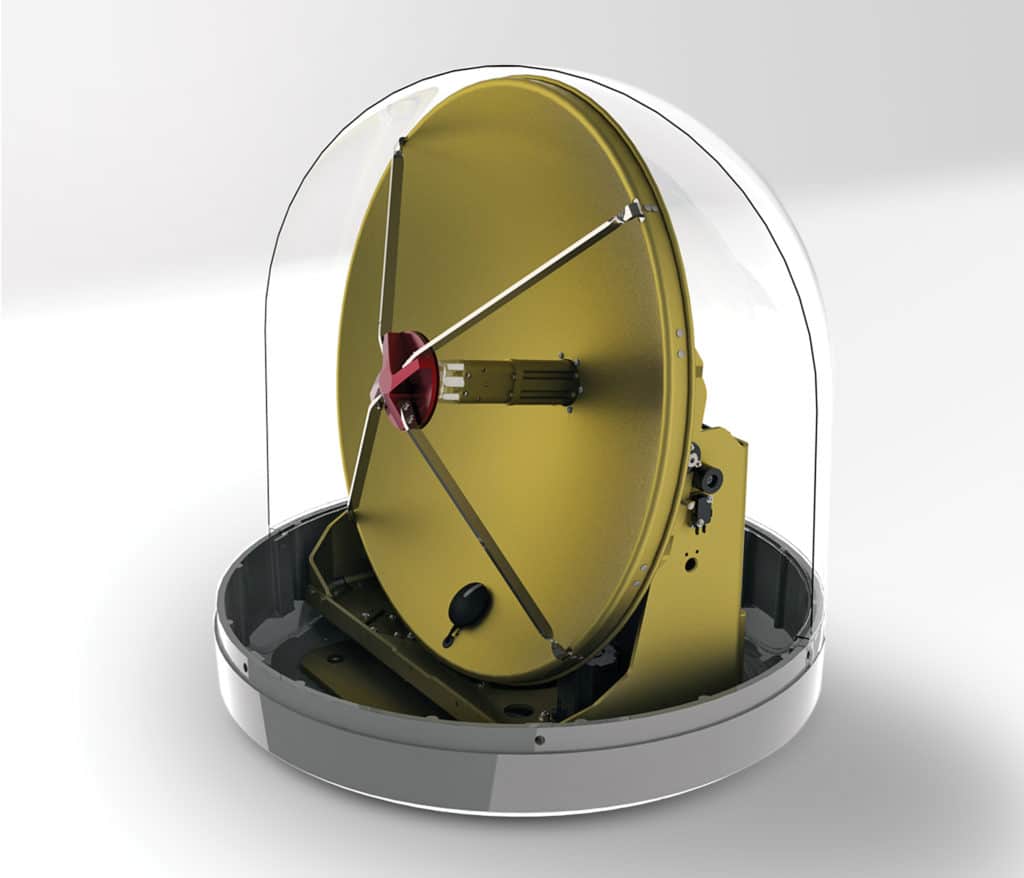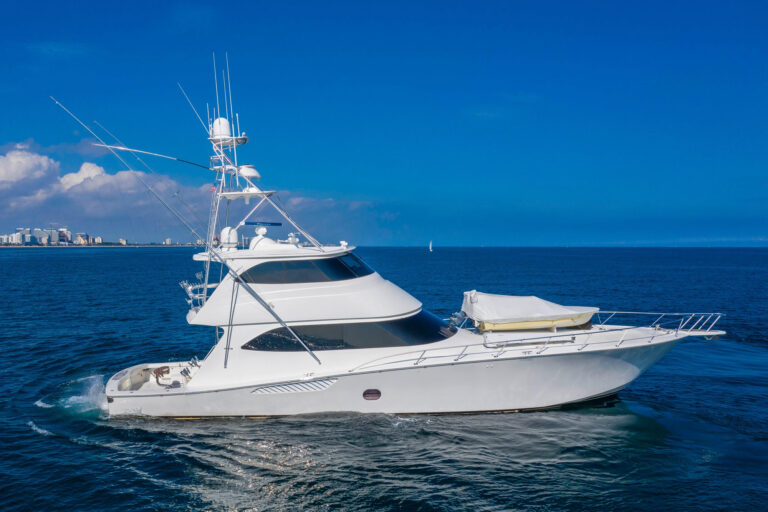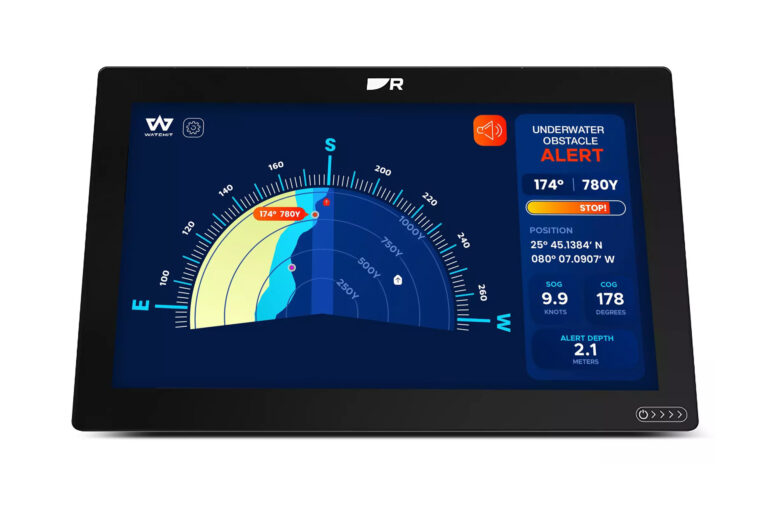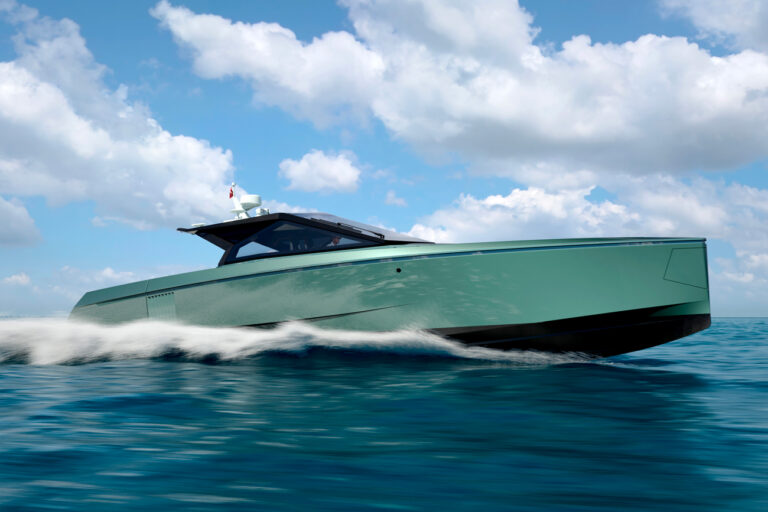
The 50-yard lines have been painted gold all season, letting NFL fans know this year is special. When the Super Bowl airs on February 7, it will be the 50th contest of strategy and strength on the gridiron — a celebration not just of touchdowns but of a half-century of champions. That beloved American day of shouting at the TV screen falls right in the middle of prime boating season from Florida to the Caribbean. Football-loving yachtsmen will need to make a choice: cruise, or stay home and watch the big game? Only yacht owners who have a television receive-only (TVRO) system will get to combine their passions.
If you have satellite-television service at home, you’re familiar with TVRO technology. A television station broadcasts its signals to a satellite circling the planet in a geosynchronous orbit some 22,236 miles above the Earth’s equator. The satellite then broadcasts its signal back down to land-based subscribers. Unlike houses, boats are mobile, so vessel-mounted TVRO antennas require active stabilization to locate and lock on to the strongest signal. Here, vessel size matters. Yachts pitch, roll and yaw more than ships do, so an antenna on a 50-footer needs to move faster than a ship-based installation.

“While (almost) everyone agrees that satellite TV is a great onboard upgrade, physically accommodating a TV screen and the required satellite-receiver box can be tricky on smaller boats. As a space-saving alternative, Intellian’s Paul Comyns suggests that the satellite- TV signal can instead be sent from the receiver to a multifunction device via a video-in port, with the vessel’s audio network tackling sound. Comyns also suggests that, for aesthetic purposes, the receiver box doesn’t need to be mounted next to the TV screen. Instead, it can be hidden and controlled via a wireless remote, which is available from your satellite-TV service provider.”—d.s.
“When the antenna drops the signal [from weather], you won’t be worried about watching TV, but where the life jackets are stored,” says Paul Comyns, vice president of global marketing for Intellian, a satellite-communications manufacturer. The majority of satellite-TV subscribers are land-based, so service providers aim their signals at terra firma, not offshore waters. But, like cellphone signals, TVRO signals can be received miles offshore. Still, they don’t span oceans. “The antenna side is easy,” Comyns says. But being able to access standard or high-definition [HD] resolution programming is sometimes harder.
“Satellite TV isn’t a one-size-fits-all situation,” says Rick Garrison, KVH’s media and communications manager. This is especially true for boaters cruising to different regions; different service providers broadcast their signals to different markets.
“You can’t receive DirecTV service in the middle of the Mediterranean because it’s not broadcast there,” says Ryan Smith, KVH’s leisure national sales manager. Also, different markets use different supporting technologies, namely linear or circular polarization; Europe and most other markets use linear polarization, while the United States uses circular polarization.
TVRO antennas are a solution that lets boaters receive any service provider’s signals, but the antennas need the correct components. This typically includes a stabilized antenna above deck; a belowdecks antenna-control unit; at least one satellite receiver (from your service provider); a screen (see “Aesthetic Alternatives”) and cables. While a single antenna can provide a signal for multiple screens, each TV needs a dedicated satellite receiver to enable individual viewing. Conversely, a yacht can carry a single satellite receiver, but then each screen has access only to certain channels.
DirecTV and Dish Network are North America’s two biggest service providers, with DirecTV offering the widest programming selection, including its coveted NFL Sunday Ticket. Dish Network broadcasts regular and HD programming on Ku-band frequencies (12 to 18 GHz), while DirecTV broadcasts on both Ku- and Ka-band frequencies (26.5-40 GHz). The Ka band offers the higher bandwidth that DirecTV uses to broadcast its HD service, but it also requires a larger antenna. Here, there’s good news for boaters who ply U.S. waters and have home-based satellite-TV contracts. “If you have satellite TV at home, you can use the add-a-room feature, which gives you an extra receiver that you can take on board,” Comyns says.









